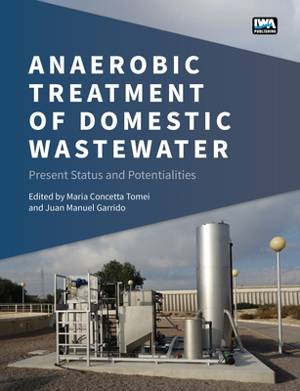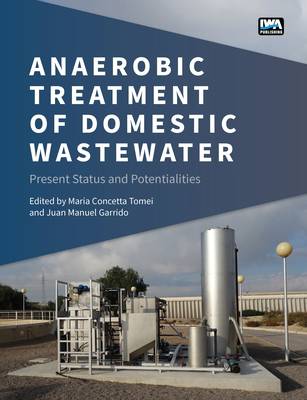
- Afhalen na 1 uur in een winkel met voorraad
- Gratis thuislevering in België vanaf € 30
- Ruim aanbod met 7 miljoen producten
- Afhalen na 1 uur in een winkel met voorraad
- Gratis thuislevering in België vanaf € 30
- Ruim aanbod met 7 miljoen producten
Zoeken
Anaerobic Treatment of Domestic Wastewater
Present Status and Potentialities
Maria Concetta Tomei, Juan Manuel Garrido
Paperback | Engels
€ 356,45
+ 712 punten
Omschrijving
The main challenge in wastewater treatment is changing the perception of wastewater as a waste product to be treated or disposed of, and instead seeing it as a source of energy and other valuable byproducts. This approach is in line with the basic principles of a circular economy, which replaces the 'end-of-life' concept with reducing, reusing, recycling, and recovering materials in production, distribution and consumption processes. The anaerobic treatment of wastewater aligns with these goals: energy, safe water and nutrients can all be recovered in the process. As a result, the anaerobic process could represent the best mainstream treatment option for domestic wastewater. The development of powerful technologies such as high-rate and membrane reactors is making anaerobic wastewater treatment more viable, especially in cold and moderate climate regions where the process is made more challenging due to the low process efficiency for dilute streams such as domestic wastewaters. Anaerobic Treatment of Domestic Wastewater: Present Status and Potentialities presents the current state of knowledge and future perspectives of the anaerobic process applied as a mainstream treatment method of domestic wastewater. 12 chapters cover engineering, microbiology, process monitoring and control, sustainability, life-cycle assessment, and techno-economic analysis. Topical areas of research, including the fate of microplastics and antibiotic resistance in the treatment line, are also discussed. This book provides all the necessary knowledge to analyse, evaluate, design, and implement anaerobic bioreactors for domestic wastewater treatment, making it essential reading for doctoral and master's students of water treatment subjects, and professionals or researchers in the water sector.
Specificaties
Betrokkenen
- Auteur(s):
- Uitgeverij:
Inhoud
- Aantal bladzijden:
- 368
- Taal:
- Engels
Eigenschappen
- Productcode (EAN):
- 9781789063462
- Verschijningsdatum:
- 15/05/2024
- Uitvoering:
- Paperback
- Formaat:
- Trade paperback (VS)
- Afmetingen:
- 189 mm x 246 mm

Alleen bij Standaard Boekhandel
+ 712 punten op je klantenkaart van Standaard Boekhandel
Beoordelingen
We publiceren alleen reviews die voldoen aan de voorwaarden voor reviews. Bekijk onze voorwaarden voor reviews.











